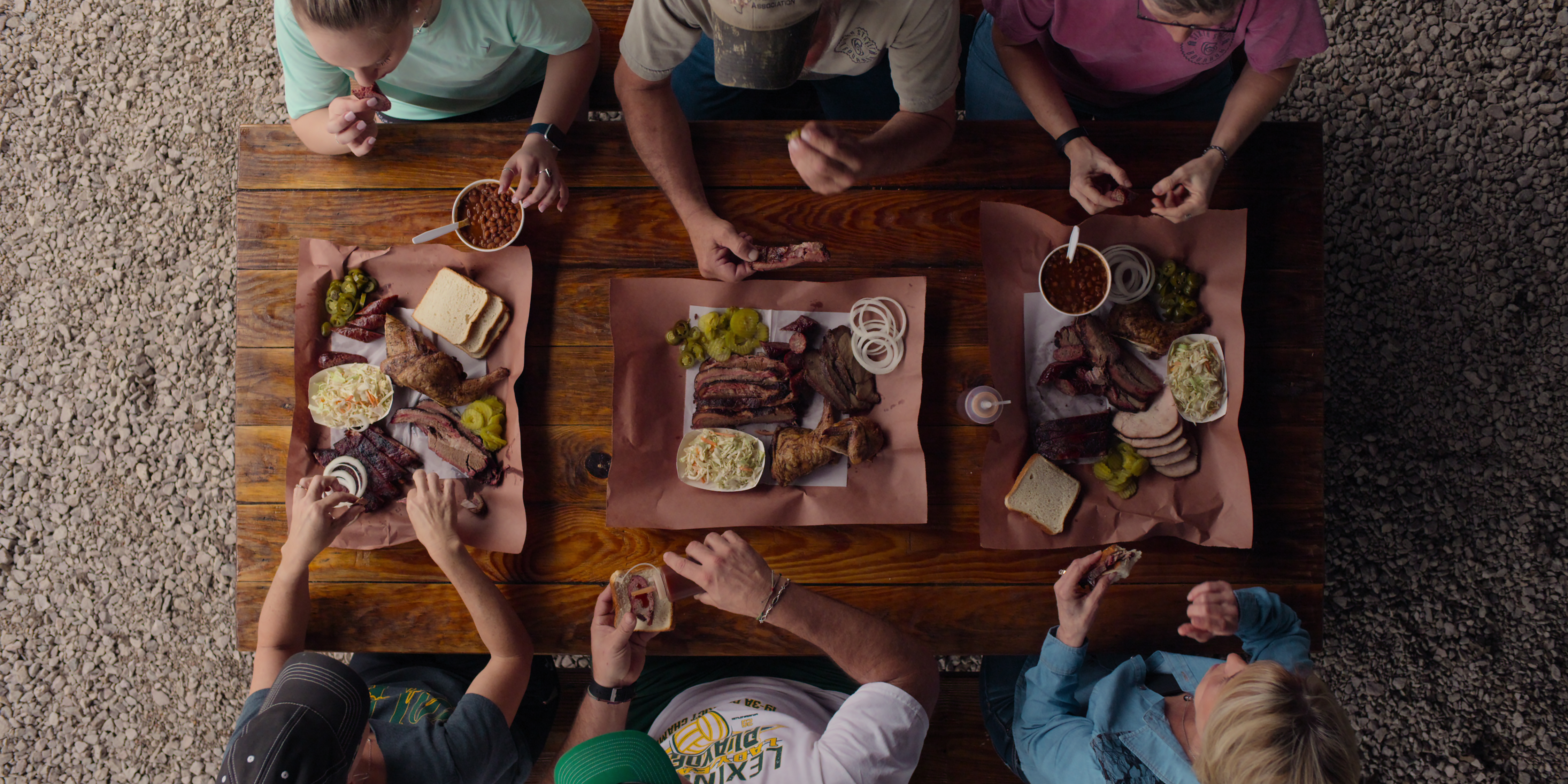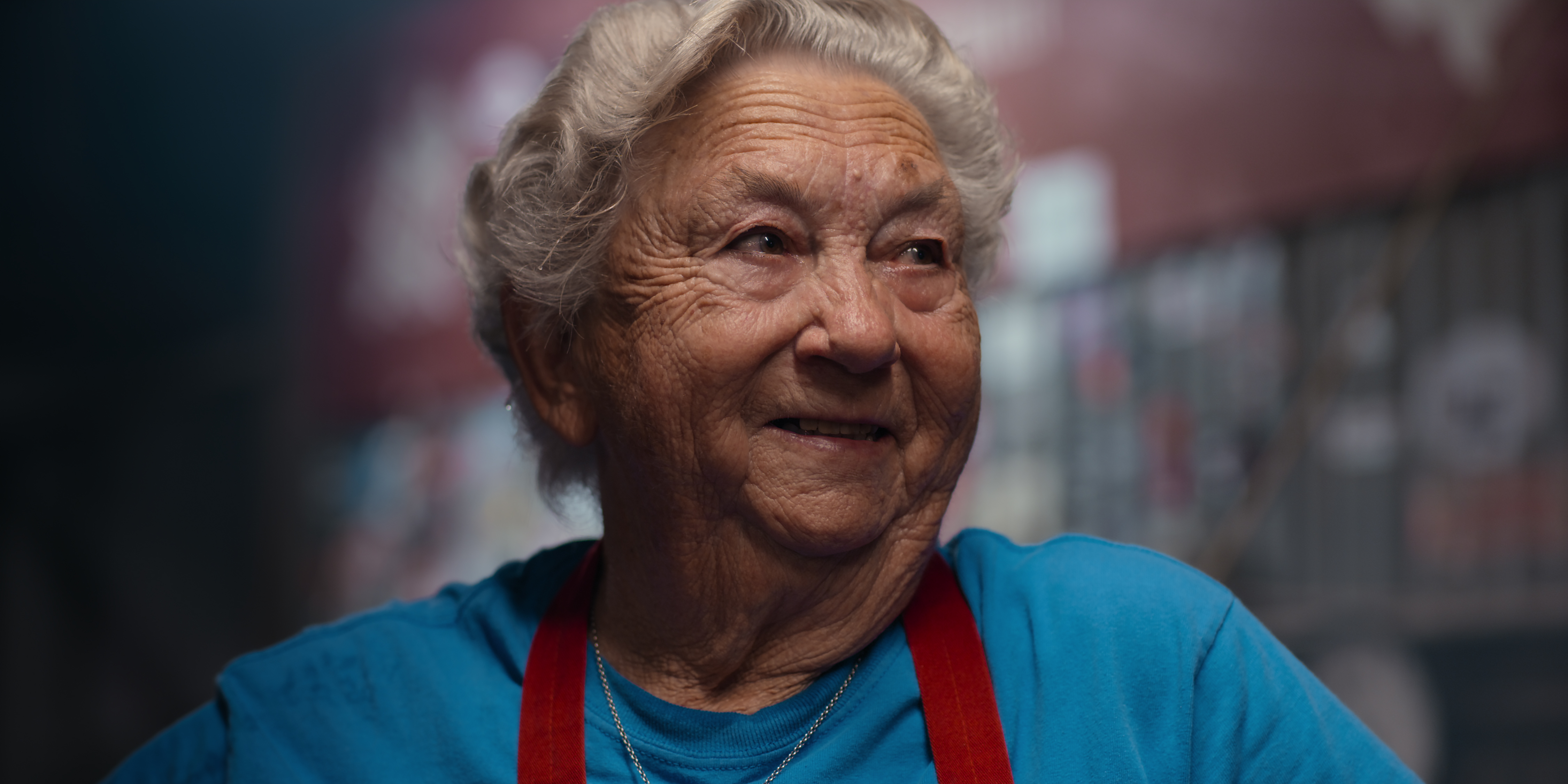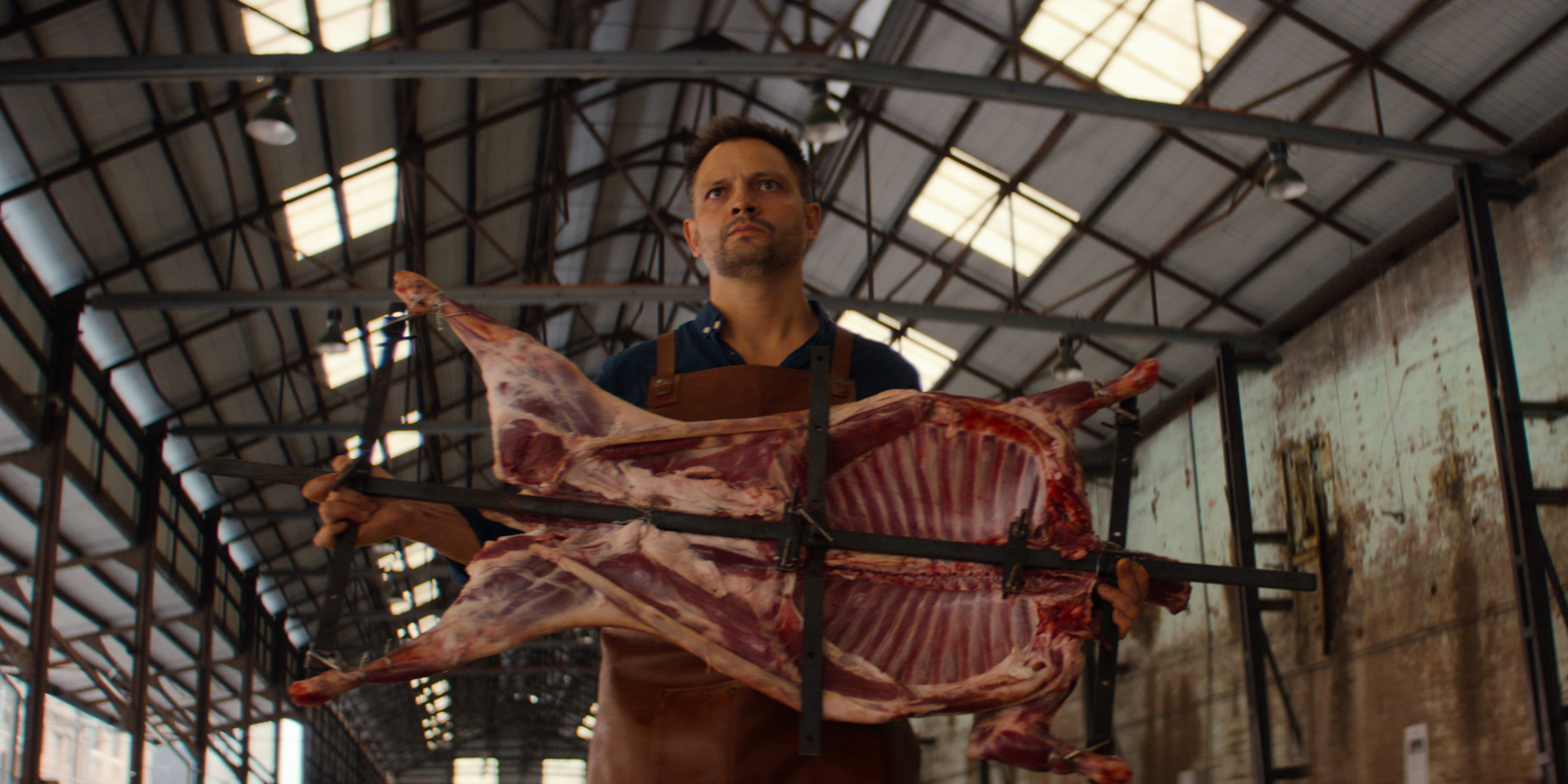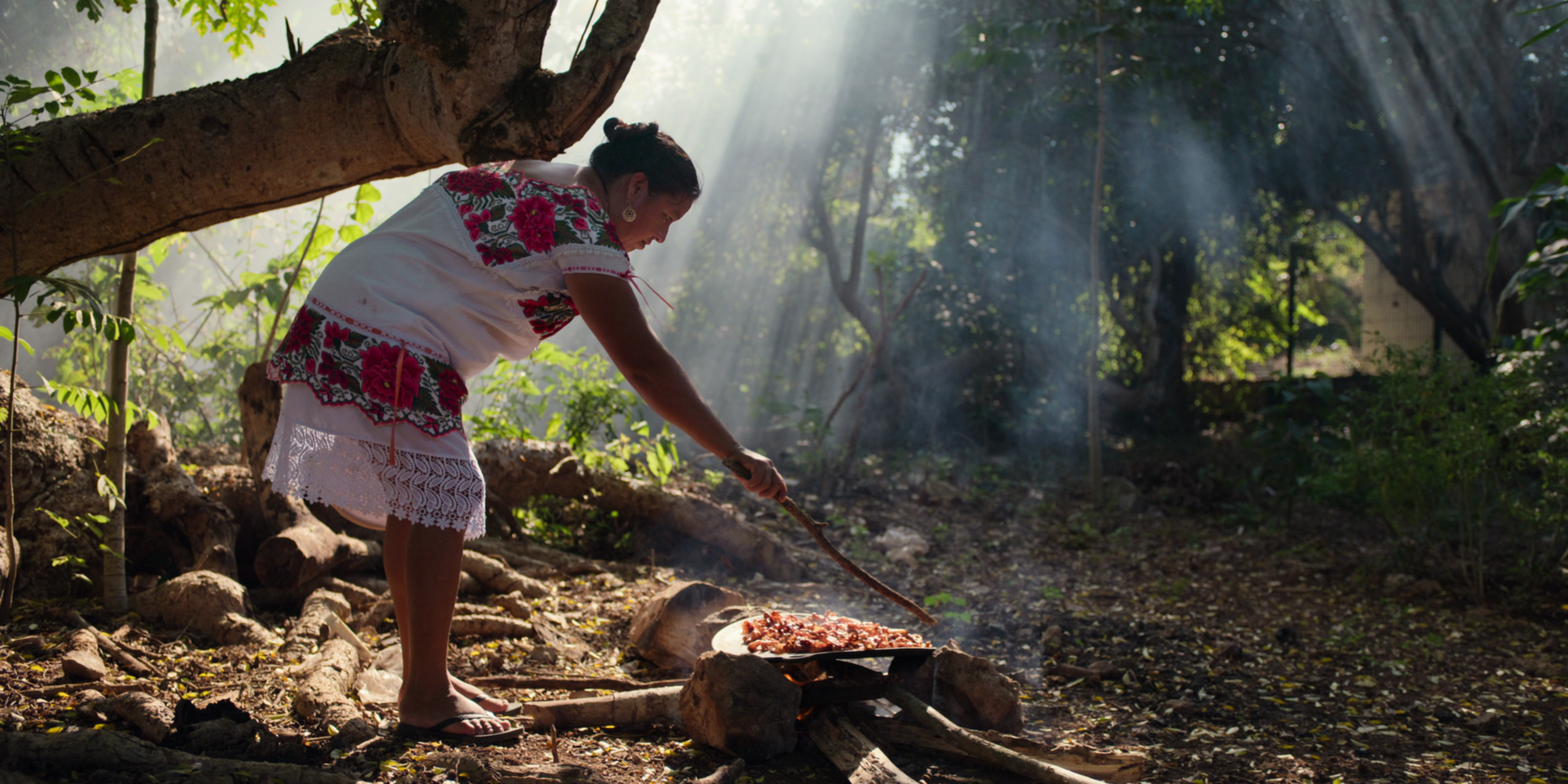Director and producer Brian McGinn first got attention while directing comedy shorts with Dave Franco. Then McGinn landed a gig producing and directing episodes of Netflix’s hit food series Chef’s Table and the documentary Amanda Knox. McGinn knows how to tell a good story, that’s what we’re getting at here.
We caught up with McGinn as he was doing press for the latest season of Chef’s Table: BBQ. It’s a series of episodes that’s triumphant, educational, and emotional all at once. A peek into the world of barbecue from the streets of Charleston to Texas’ Hill Country to Syndey Harbor to the jungles of the Yucatan.
As Chef’s Table: BBQ rolled out, McGinn was kind enough to give us a nice chunk of time to chat. It’s a fun conversation and a granular look into the making of Chef’s Table — one of the greatest food documentary shows ever.

What was the impetus for you focusing so clearly on one genre of food, barbecue, this time around?
Look, every time we make anything we’re excited to try to share some universal values and feelings, and we see barbecue as this amazing tradition that transcends. It’s all over the world. People barbecue in different ways, and it brings people together and it celebrates this shared bond between people. We thought, at this moment, it turned out to be interesting because now we’re all in this situation, but we thought it was really nice to try to bring people together and celebrate the way that barbecue can actually create community. We thought that was a really cool thing to focus on.
So for us, we see it as an extension of Chef’s Table — as it’s own thing because I think that there’s so much tradition in barbecue. There’s so much richness there. It doesn’t have to be just a season, it can have its own life.
What really comes through in the four episodes is that community is really what is at the root of barbecue. You see folks coming into these joints on Saturday and Sunday, and it’s been such a huge part of their lives for so long, even if the pits aren’t well-known outside of their hometowns.
How did you guys find these particular four subjects?
I think the other thing that we’ve really been trying to do is to find different kinds of stories to share and to put different types of people front-and-center on our series. So for each of our four episodes, we were trying to find stories and people that we could feature that maybe come from a different point of view than some of the traditional high-end chefs that we’ve featured on the show before.
So Tootsie, I mean, first of all, she is truly a legend in Texas barbecue. And for us, it was the thing that was so exciting was to be able to tell a story about someone for whom cooking is not even her full-time job, right?
Right. It’s technically a side gig.
Right! During the week she’s a janitor and then on Friday nights she goes home and sets her alarm for one in the morning. She gets up and she starts cooking barbecue. The idea of that tenacity and that dedication, we thought, was just amazing and a unique story that we really wanted to highlight.
With Rodney, it was so important for us to pay tribute to the history of whole hog BBQ, and the tradition of coming from an African American background of cooking the whole hog in the South, and especially in South Carolina. That was a type of barbecue that we were really excited to share. Then we also loved Rodney’s philosophy, “every day is a good day.” It’s such a great way of looking at life.
Then there’s Lennox, who is probably the most traditionally chef-y of the subjects. We saw his episode as a bridge to the history of what we’ve been doing at Chef’s Table. But also, Lennox is coming from a place where acclaim is not really what he’s in search of. He’s really in love with this form of cooking: Cooking with fire and trying to take it to new places is what he’s fully dedicated to. We loved the idea of featuring someone who’s not actually dedicated to shining a light on themselves.
How did the last episode in the Yucatan fit into that?
For us, we’re always trying to find a way of saying, “Okay, if this is a barbecue season, what are some episodes that people might not expect to see in the season? And how can we explore new parts of the world and share, with our audience, things that we think are really awesome and important?”
So Rosalia’s story is as much about what happens to an Indigenous community and to Indigenous traditions over time as it is about barbecue itself. At the same time, Cochinita pibil has this place in the wider conversation of barbecue, and the pit barbecue of the Mayans became a thing that inspired so much of American barbecue as we know it today. It was a way of both paying tribute to the roots of American barbecue while also exploring this culture, this community, and celebrating the different ways in which barbecue brings us all together.
I think also in every single one of these episodes, the community plays this big role. I think making barbecue really brings Tootsie into her community. She’s found these different ways to be part of her community and she’s persevered through all sorts of tragedy. And Rodney Scott, obviously the idea that his whole community could come together over barbecue certainly comes through in the episode. And Rosalia, cooking Cochinita as a tradition is something where the whole community comes together to cook it and eats it on special occasions.
The communities around these barbecue traditions were really important to us this season.

It’s also fascinating how you’re able to capture the intergenerational aspects of barbecue. These traditions are passed down. They’re adapted and modernized. But, they’re also preserved. That’s something I think people forget about with barbecue is how deeply rooted it is in culture through generations of people cooking it.
Totally. And each of these episodes, the type of barbecue is really a source of pride for the community, right? Hill Country BBQ — as this kind of iconic form of barbecue in Texas — is something where there’s a lot of pride around that style. I would even say with Lennox, at Extebarri he learned this kind of elevated version of the Asador cuisine from the Basque Country and that style of cooking with fire and has continued to push that in the direction that he’s excited about. But as I say, he really emerges from one of those styles as well. Rodney Scott’s whole hog has this long tradition going back to the early days of the American South, particularly in the African American community. And certainly, Cochinita is the same thing. I don’t know the exact years, but, Cochinita goes back to pre-Hispanic times.
There’s something so exciting about being able to trace that history and then find the people who really embody the spirit of these longstanding traditions, and are carrying them forward to speak to the future. That’s always something that’s really exciting for us because that demonstrates the passion and the care that each of these people has for what they do. That’s something we just love and respect and want to celebrate with Chef’s Table.
The show has obviously evolved. So, where do you see this going next?
I think early on in the show, we were really coming from a place where Jiro Dreams of Sushi was a big inspiration for us. David Gelb [that film’s director] was the guiding light of the series. So when we started, we were exploring a lot of other three Michelin star restaurants or places that got acclaim in those traditional high-end, fine dining worlds.
The exciting thing has been that, as the show evolved, we’re discovering how universal food is and how important people are in every type of cuisine. The exciting thing is that there are so many other types of cuisine to explore that we haven’t had a chance to do yet.
How does that translate to the show?
So, I think there are two tracks that we can go on. I think it’s great to continue to explore these iconic six chefs from different backgrounds. Then, it’s also really interesting to explore somewhat more niche categories that reveal much larger themes. For us, the show has never been about purely the culinary world. It’s been about how can we learn and how can we show our audience these inspiring life stories with lessons that I think expand well beyond just the food world. I don’t think there’s no end result where we’re thinking, “Okay, because X, Y, or Z is happening, we don’t want to explore some subject matter.” It’s really about, “how can we find things that inspire us?”
It’s been really exciting to step outside of the fine-dining world and see how many incredible stories there are to share while trying to do a better job of representing and celebrating the broad swath of diversity that exists in the food world.

What’s your favorite barbecue? Are you a Memphis guy, a Carolina Hog, Hill Country, Cochinita?
I went to school in North Carolina, so I love some Carolina pulled pork.
A little bit of mustard?
Yeah. I love that. Obviously, I’m a big Texas brisket fan. Everyone that I know is. Cochinita, in Yaxunah, where Rosalia and a number of the other members of her community cook, is absolutely stunning. I feel like Lennox’s food and the Asador food at Extebarri in the Basque Country is equally delicious. So I think one of the great things is that all these styles are so different that they all stand out on their own merit. So, I guess, I’m giving you a cop-out answer by saying I like all of them.
We can spread the love around. It’s okay.
The first one that I really fell in love with was definitely that pulled pork in Carolina.
You’re in an interesting position in the food industry where you’re very deep in it. You know a lot of people there. But you’re also on the outside looking in as a filmmaker. What have you seen change in the last six months that has actually been positive or something that might be good for the future of food?
The thing that’s inspiring to me every day is how creative members of the culinary world are in finding ways to adapt. The number one goal, I think, that people often lose track of when we’re talking about chefs as superstars and all those things, is that it really comes down to this fundamental relationship between cooks and diners, right? No matter what, it’s creating an experience of dining that’s like inviting some into the kitchen but making it feel like home. It’s been really exciting and awesome seeing how much adaptation everyone is capable of, and how creative people are being in trying to help other members of the community.
Another thing that’s really stood out to me is that it’s not a situation where each restaurant and each chef is on their own. It’s a community banding together and saying, “Hey, restaurants are really vital. What we do is really important for our culture and to the community.” I think that’s been a really lovely thing to see.

You can watch all of the new season of ‘Chef’s Table: BBQ‘ on Netflix.







